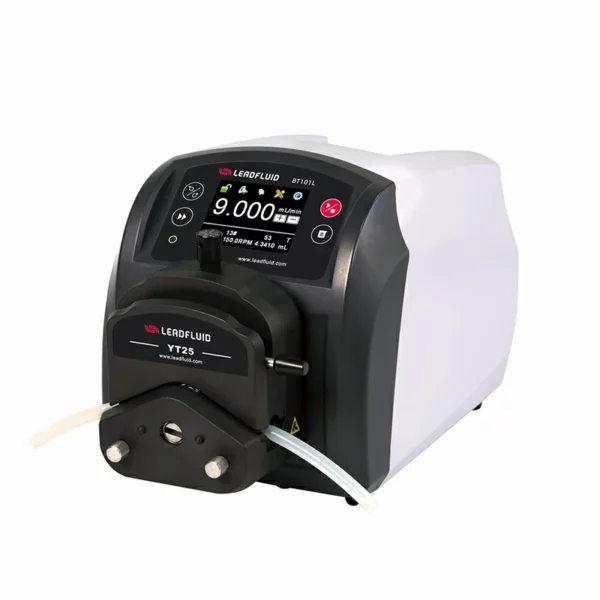Peristaltiske pumper, også kendt som slangepumper eller rullepumper, er meget udbredt i forskellige industrier til væskeoverførsel. De er især populære til applikationer, der kræver præcis dosering og ren håndtering af følsomme væsker. Blyfluid, et betroet mærke inden for væskehåndtering, leverer peristaltiske pumper af høj kvalitet, der er skræddersyet til at imødekomme forskellige industrielle behov. Når man diskuterer driften af disse enheder, one question that often arises is whether it’s okay to run a peristaltic pump dry. Let’s delve into this topic.
Understanding Peristaltic Pumps
Peristaltic pumps work by using rollers or shoes on a rotor to compress a flexible tube, creating a seal between the inlet and outlet ports. The fluid is moved through the tube in a continuous motion, similar to the biological process of peristalsis found in living organisms. This design allows for accurate pumping of liquids without contamination from the pump components.

Can a Peristaltic Pump Be Run Dry?
Advantages of Running Dry
- No Fluid Contamination: Running a peristaltic pump dry can be advantageous when switching between different fluids, as it eliminates the risk of cross-contamination.
- Convenience During Maintenance: It can be convenient during maintenance or cleaning procedures if the pump can operate without fluid.
Risks Associated with Running Dry
- Tube Damage: The primary concern with running a peristaltic pump dry is potential damage to the tubing. Without fluid to lubricate the interior walls, the tube may wear out faster due to friction.
- Heat Build-up: Running dry might cause heat build-up, which can degrade the tube material over time, leading to premature failure.
Solutions for Safe Operation
To ensure safe operation when running a peristaltic pump without fluid, consider the following:
- Consult the Manufacturer: Always check with the OEM peristaltisk pumpe manufacturer for specific guidelines regarding dry running.
- Choose Compatible Tubing: Select tubing materials that can withstand short periods of dry running without significant damage.
- Limit Dry Running Time: If dry running is necessary, try to limit the duration to minimize the risk of damage.
- Implement Cooling Measures: Some advanced peristaltiske påfyldningsmaskiner feature cooling systems that can help prevent overheating when operating dry.
Where to Find Quality Peristaltic Pumps
If you’re looking for reliable peristaltic pumps, including those suitable for occasional dry running, there are numerous peristaltic pump suppliers available. These suppliers offer a range of models designed for different applications, from laboratory use to industrial processes. Whether you need a custom solution from an OEM peristaltic pump provider or a standard unit, it’s important to choose a supplier that offers quality products and support.
In conclusion, while some peristaltic pumps can tolerate short periods of dry running, it’s not generally recommended as a regular practice due to the potential risks involved. Always refer to the manufacturer’s instructions and specifications for the best practices concerning your specific pump model.